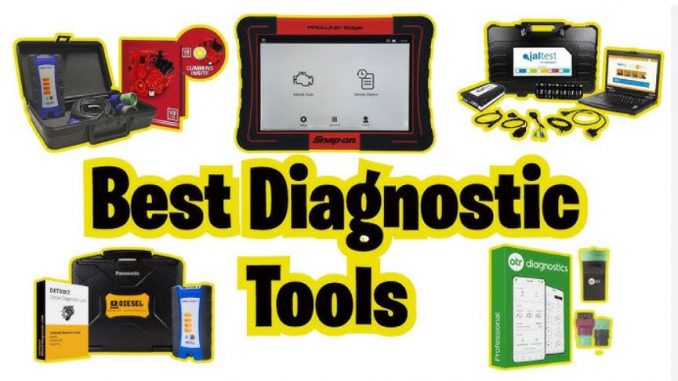
Choosing the best diagnostic tool for semi trucks depends on various factors, including compatibility with the truck’s make and model, ease of use, functionality, and price. Here are some top diagnostic tools commonly recommended for semi trucks, each with its own unique features:
- Nexiq USB-Link 2: This is a highly popular adapter that provides a reliable connection between your computer and the truck’s diagnostic port. It supports a wide range of software applications and is compatible with multiple vehicle makes and models. It’s widely used for reading fault codes, performing diagnostics, and programming.
- DG Technologies DPA 5: This diagnostic and reprogramming tool works with commercial vehicle, automotive, and industrial products. It supports both standard and proprietary protocols and is durable, making it suitable for heavy-duty use.
- Jaltest Commercial Truck Diagnostic Tool: This is a comprehensive multibrand diagnostic solution. It provides diagnostic capabilities across a wide range of commercial vehicle makes and models. It’s particularly noted for its user-friendly interface and extensive coverage of American, European, and Asian vehicles.
- TEXA Diagnostic Scanner: TEXA offers tools that cover a wide range of vehicles, including trucks, cars, motorcycles, and marine engines. Their diagnostic scanners are well-regarded for their robust features, including support for a broad spectrum of vehicles and capabilities like reading fault codes, live data interpretation, and ECU programming.
- Launch X431 V+ Heavy Duty: A tablet-based diagnostic tool designed specifically for commercial vehicle diagnostics. It supports a broad array of vehicles and functions, including system diagnostics, data streaming, and module programming. It’s user-friendly and comes with a durable case suitable for the garage environment.
When choosing a diagnostic tool for semi trucks, consider:
- Compatibility: Ensure the tool supports the specific models and makes of trucks you’ll be working with.
- Functionality: Look for tools that not only read fault codes but also offer advanced functions like live data monitoring, ECU programming, and comprehensive system diagnostics.
- Ease of Use: Consider tools with intuitive interfaces, good technical support, and regular software updates.
- Durability: Since the tool will be used in a rough environment, it should be sturdy and reliable.
Each tool has its strengths, so the best choice will depend on your specific needs and budget.
Leave a Reply